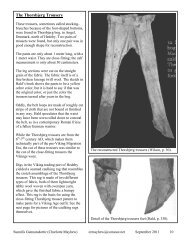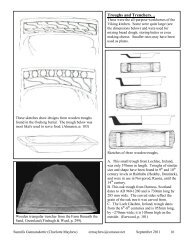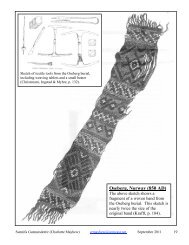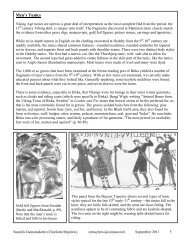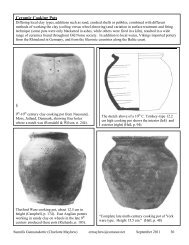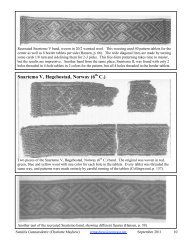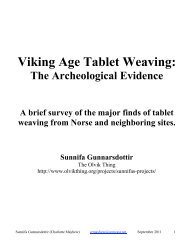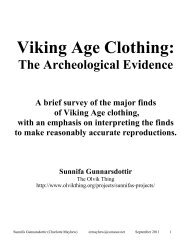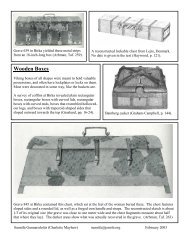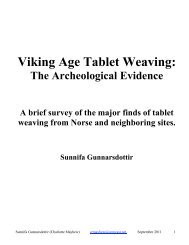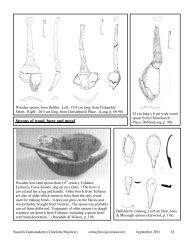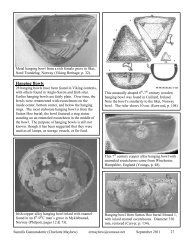Mammen, Denmark (970-971AD) - Olvik Thing
Mammen, Denmark (970-971AD) - Olvik Thing
Mammen, Denmark (970-971AD) - Olvik Thing
You also want an ePaper? Increase the reach of your titles
YUMPU automatically turns print PDFs into web optimized ePapers that Google loves.
Reproduction of the band from Kekomaki, Kaukola, Finland (1200AD), woven in 15 tablets (7 for thecenter pattern and 8 for borders) in two colors in 20/2 wool yarn. The band is made using a variation ofEgyptian diagonals, where each tablet is threaded with 2 threads in 2 colors, with the tablets threaded sothe colors are in pairs. This threading pattern gives a great deal of variety in making up patterns whileweaving. In the case of this band, the weaver followed a repetitive turning sequence (Hansen, p. 71).3 Bands from Finland (11 th- 13 th C.)There are quite a few Finnish tablet weaving finds, but only a few written up in English. The 3 bandsdescribed here share similar threading techniques, although the Kekomaki band used only 2 colors in thewarp threads, and the Humikkala and Eura bands both used 3 colors each.Reproduction in 20/2 worsted weight wool of a band from Humikkala, Masku , Finland, dated to 1,000-1100 AD. This band was very likely a woman’s belt. This reproduction band is woven with 27 patterntablets and 2 border tablets per side, with a free-hand turning pattern (Hansen, p. 70). This band shows atechnique which is common in medieval tablet weaving, which is to have the color used for the figuresremain the same throughout the weaving, while the other color changes, giving the effect of backgroundstripes. Though it is hard to see in the greyscale scan above, the band has alternating red and lavenderstripes running the length of it. The borders are actually alternating strips of red/white andlavender/white which are twined down the length of the band which give the borders a candy cane effect.A similar threading pattern in the center of the band was used on the large stole from the Church of St.Donat, Arlon, Belgium (12 th C.), later in this presentation.The pattern below is from the reconstructed Eura, Luistari, Finland (Grave 56), dress which dates to1000 AD. Note that the pattern reverses itself partway through the band (Lehtosalo-Hilander, p. 50).Sunnifa Gunnarsdottir (Charlotte Mayhew) crmayhew@comcast.net September 2011 30



